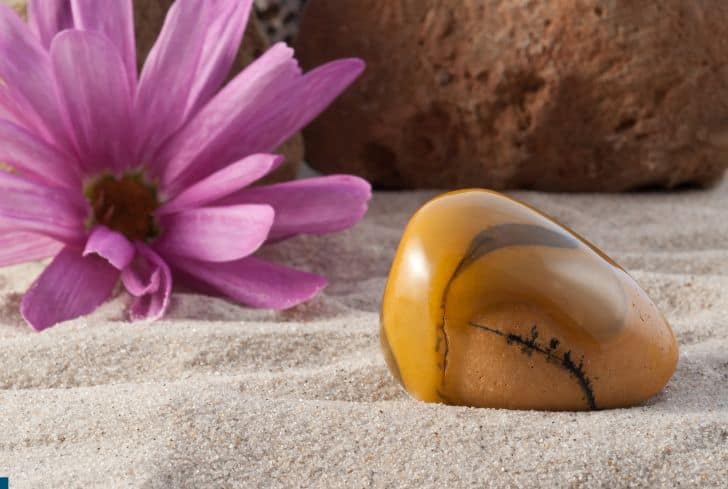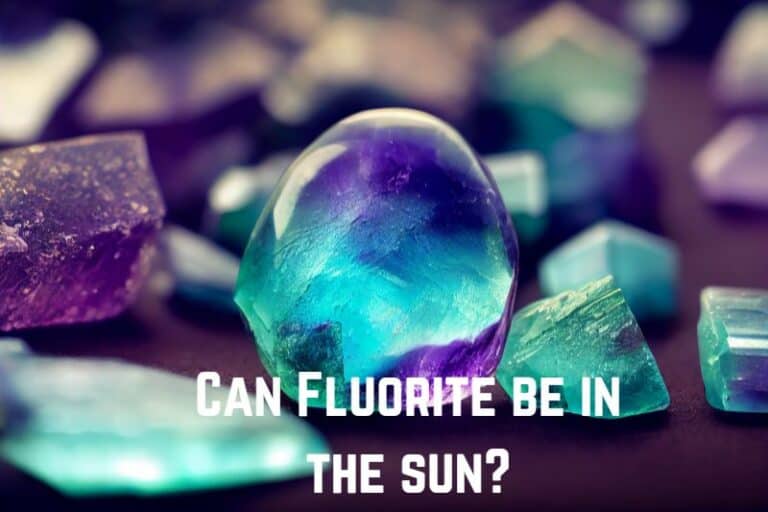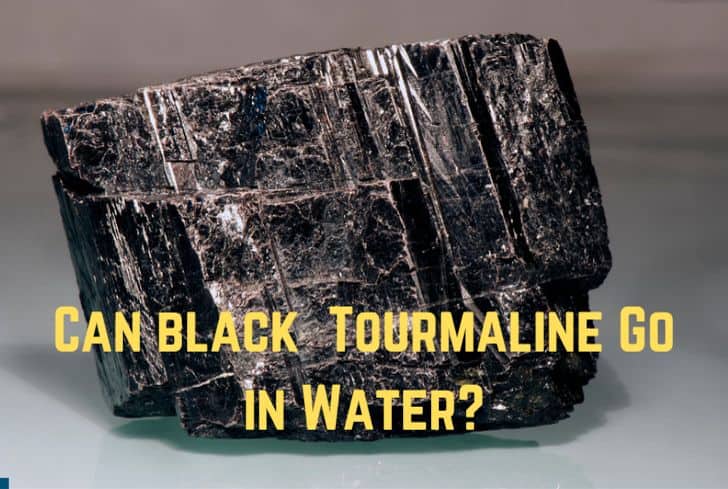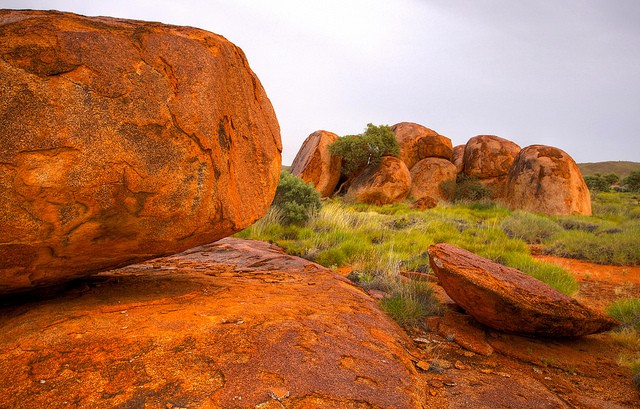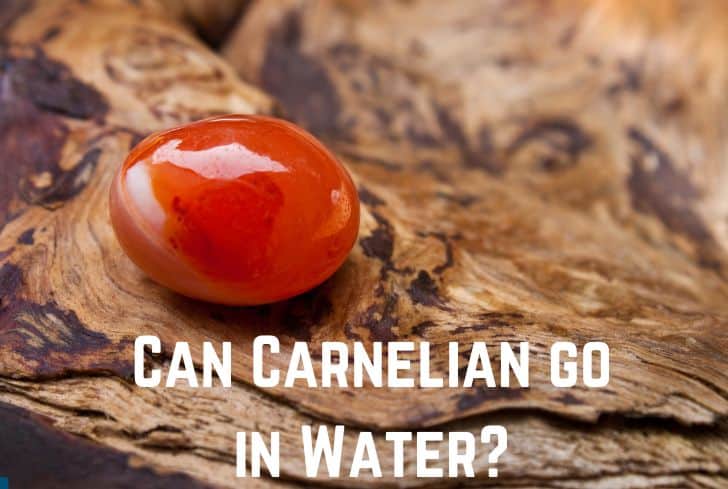Can Green Aventurine go in the Water? (And in Sun and Salt)
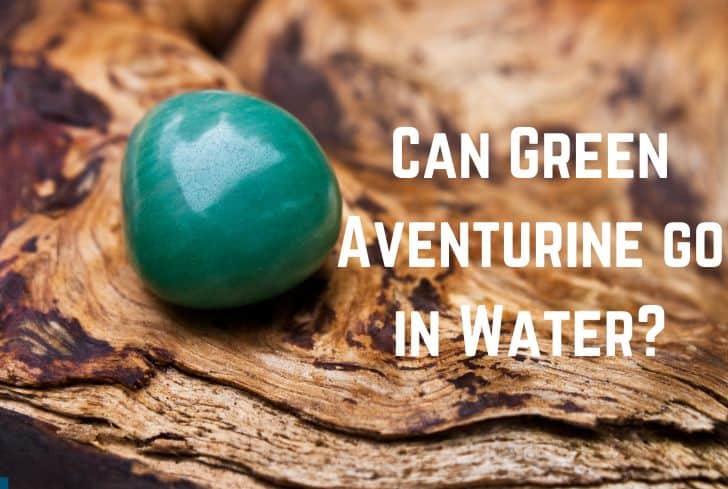
Aventurine is a kind of quartz (crystalline mineral composed of silica), whose plate-like mineral inclusions give it a unique shimmering effect. Aventurine is usually green in color, and because of its attractive optical effect, it is a popular semiprecious gemstone.
Have you ever wondered if green Aventurine can go in the water? In this article, we are going to discuss just that. We will begin with the properties of aventurine. Then we will talk about its interaction with water, salt, and sunlight. Finally, we will discuss how to clean aventurine.
Is Green Aventurine Water Safe?
Yes, green aventurine is water safe. It has a value of around 6.5 on the Mohs Scale, which is above the minimum value required for minerals to survive underwater. However, like all crystals, it should not be immersed for too long as water can dull its surface and damage its structure.
Mohs Hardness Scale is a relative measure of a mineral’s resistance to scratching. Besides that, it also indicates a mineral’s relationship with water. Usually, a value over 5.0 means that the stone can survive underwater.
Soft minerals like selenite (value of 2.0 on the Mohs Scale) can completely dissolve in water. This will not happen with Aventurine as its hardness is much greater. However, it is still not recommended to immerse it in water for a long time.
What are the Properties of Aventurine?
These are the properties of Aventurine:
- Aventurescence: Aventurine has flake- or plate-like inclusions of minerals, usually those of fuchsite (a green mica rich in chromium). When light enters the stone, it strikes these inclusions and bounces off them. This reflection produces a beautiful shimmer known as aventurescence.
- Colour: Aventurine is usually green in colour, which is because of the presence of fuchsite. However, the stone can also come in several other colours like orange, pink, blue, etc. Different mineral inclusions create optical effects of different colours. For example, lepidolite imparts pink or purple, while hematite produces red or brown.
- Hardness: On the Mohs scale, Aventurine has a hardness of around 6.5, just below that of single-crystal quartz. This means that it can survive in water and is moderately resistant to scratches. Excessive inclusions can weaken aventurine and lower its hardness.
- Structure: Aventurine has a trigonal crystal system and conchoidal fracture. It does not have cleavage, but a large amount of mica inclusion in one direction can give it a specific direction of easy breakage.
- Composition: Aventurine is a form of quartz, so it is made up of silica or silicon dioxide (SiO2). It usually contains fuchsite, which gives the stone its silvery green/blue shine. The stone is often translucent, but an abundance of fuchsite can make it opaque.
Besides these, aventurine is also said to have spiritual properties. Associated with the heart chakra, the aventurine is seen as a stone of great fortune and prosperity. The name of the stone itself comes from the Italian term “a ventura” meaning “by chance”. Besides fortune, it also soothes the soul and regulates energy.
What Happens if You Put Aventurine in Water for a Long Time?
Aventurine has a value of 6.5 on the Mohs Hardness Scale, meaning that it can survive underwater. However, like all minerals, it should not be immersed in water for long. Otherwise, the water can tarnish its appearance and damage its structure.
Upon prolonged immersion, water enters the crevices of the stones and widens them. These fissures may not be visible at first but can slowly damage the structure of the stone. The stone will then become more brittle and might get easily damaged.
Water also tends to tarnish the appearance of the stone. It can strip the polish from the stones, making them duller. The fissures, encouraged by water, can change the way light bounces inside the stone.
As such, the optical effect created by the stone can get ruined, which is especially worse for something like Aventurine, which is known for its aventurescence.
Can Aventurine go in Salt Water?
No, aventurine should not be put into salt water. It has a value of 6.5 on the Mohs Scale, which is more than the value required for minerals to survive underwater. However, it should still not be immersed for long as water can damage it. When we add salt into this solution, it makes the corrosion worse.
Salt, dissolved in water, can enter the crevices of the stones. These particles stay here even after the water evaporates and cause these cracks to widen. This damages the structure of the stone, making it more brittle.
When saltwater comes into contact with minerals, it can also cause adverse chemical reactions. This is especially bad for stones that contain iron because water makes them rust. Saltwater hastens the rusting process by allowing the iron to lose its electrons more easily.
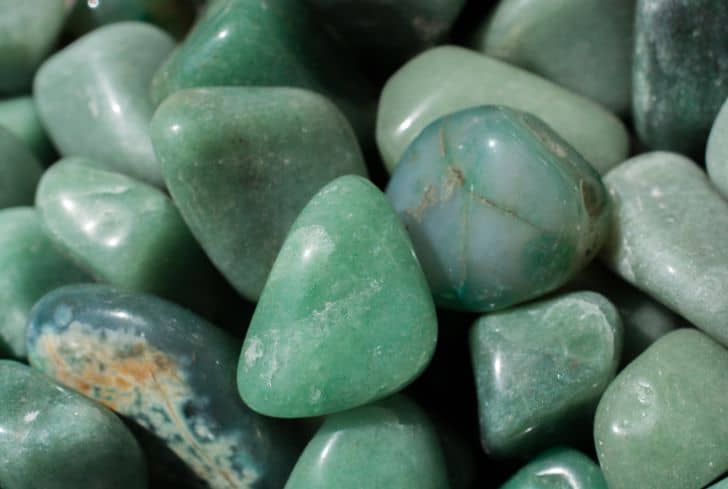
Can Aventurine go in the Sun?
Yes, aventurine can go in the sun. It has a value of 6.5 on the Mohs Hardness scale and it is quite a resistant stone. Keeping stones out in the sun is a popular method of charging them, and it is perfectly safe for Aventurine. However, it should not be left out for too long.
Sunlight is considered a powerful and fast-cleanser that recharges crystals with its vibrant energy. You can place your crystal out on the balcony or patio under direct sunlight. Make sure to not do this for more than 30 minutes.
Prolonged exposition to sunlight can cause the colours of the stone to fade. For softer crystals, the sun can also damage the structure of the stone. Aventurine, however, should be fine when left for half an hour.
You can also try leaving the stone on a windowsill. This way, the window’s glass will protect it from the UV rays of the sun. Moreover, instead of using the harsh sunlight of noon, you can try keeping your stone out in the early morning hours, when sunlight is gentle.
Finally, you can also try recharging your stones under the moonlight. This is especially effective when there is a full moon. You can leave the stone overnight, and it will get cleansed and charged.
Can Aventurine go in Salt?
Yes, aventurine can go in the salt. Given its hardness of 6.5 on the Mohs Hardness Scale, Aventurine is quite a resistant crystal. Putting stones in dry salt is a good way of recharging them, and it is perfectly safe for Aventurine. However, like all stones, they should not be put into salt water.
Saltwater is harmful to stones because dissolved salt can enter their crevices and widen them. These fissures damage the structure of the stone. Without the help of water, however, salt cannot enter the crevices and hence cannot damage the stone.
Surface contact between aventurine and salt will not harm the former. Aventurine’s hardness is much greater than that of salt, so the latter cannot scratch the former.
To cleanse aventurine with salt, you can fill up a bowl or container with dry salt or Himalayan salt. Then bury your aventurine inside the salt. Let it stay for 24 hours, and all the negative energies will be removed from the stone.
Can You Shower With Green Aventurine?
Yes, you can shower with green Aventurine. Aventurine has a value of 6.5 on the Mohs Hardness Scale, which is greater than the minimum value (5.0) required for minerals to survive underwater. However, it is still not recommended to immerse it for too long, and showering can introduce other damaging factors too.
Putting aventurine in water is safe as it has a value of 6.5 on the Mohs Scale. However, prolonged immersion in water can tarnish the appearance and damage the structure of the stone.
Moreover, when you take a shower while wearing jewellery, there are chances of damaging them in other ways. For example, crystals can slip (especially when in contact with water) and drop to the floor. The fall can make them brittle or even break them.
Aventurine is a moderately resistant stone. So it is better to always take it off before physical activities like sports, swimming, etc. While cleaning households also, it’s best to take off jewellery, as cleaning chemicals can damage the stones.
How to Cleanse Green Aventurine?
Follow these steps to clean aventurine:
- Since aventurine’s hardness is around 6.5, it is safe to put it in water for short periods. So, hold your stone under running water for a few minutes.
- Pat the stone dry afterwards with soft fabric cloth.
There are plenty of other ways of cleansing green aventurine, such as leaving it under sunlight or moonlight, keeping it in dry salt, or treating it with the smoke of sage.
Conclusion
In this article, we have talked about the interaction of green aventurine with water. Given its hardness of 6.5, green aventurine is safe to be put into water but should not be immersed for long. We looked at the properties of the stone and talked about its relationship with salt and sunlight. Finally, we discussed how to clean green aventurine.

